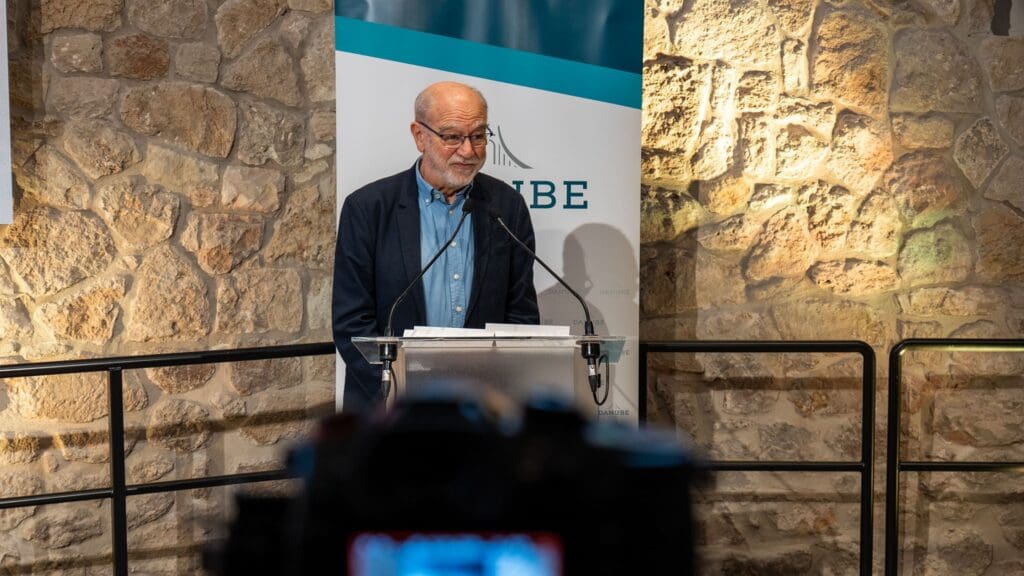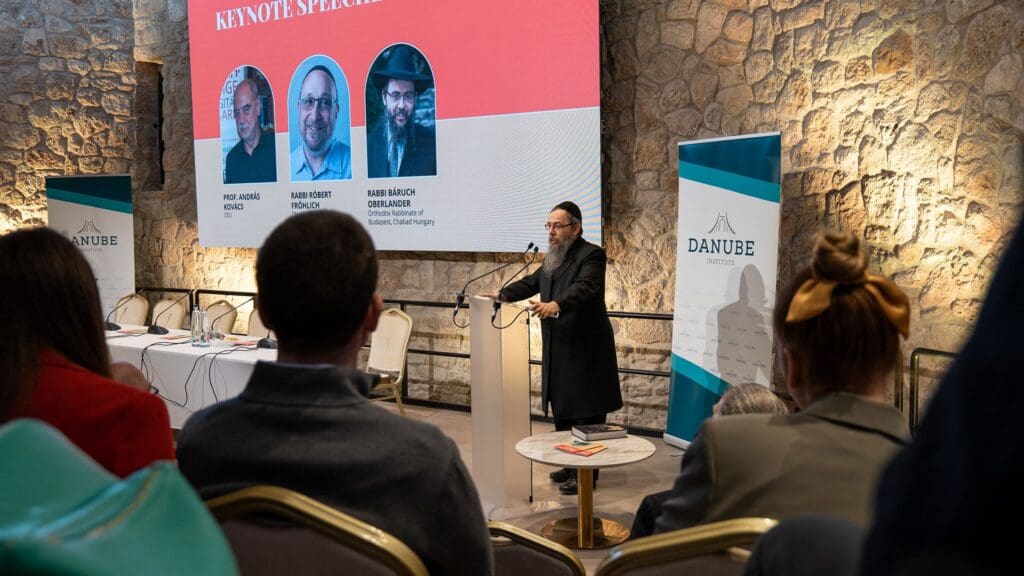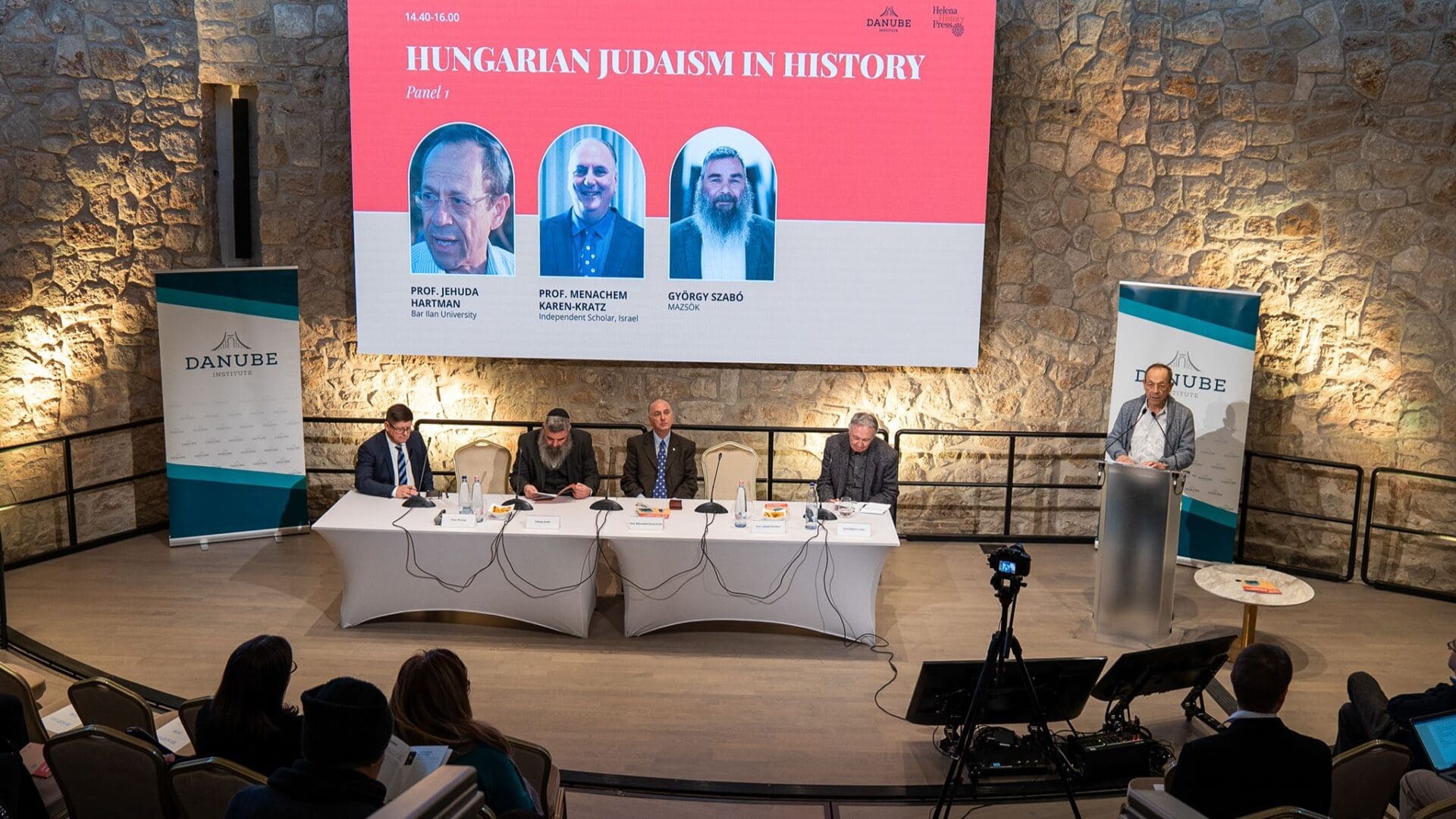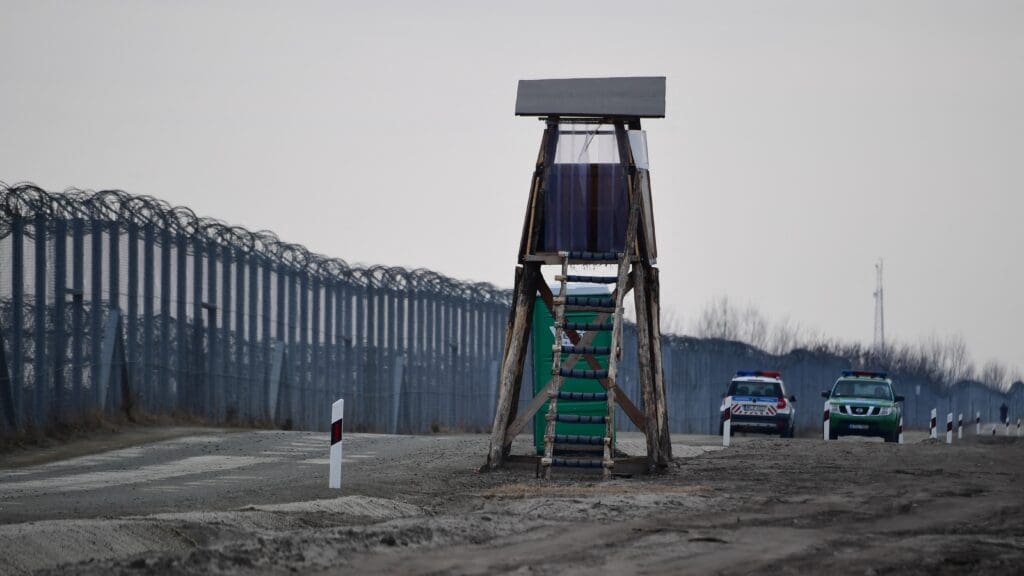On 28 February 2023, scholars and leaders of Hungarian Jewish communities discussed the situation of the Jewish people in Hungary at the Danube Institute. The event was organised on the occasion of the release of the two-volume book Anti-Semitism in Hungary: Appearance and Reality, edited by researchers of the Danube Institute and published by the Helena Historical Press in the United States. The two-volume book provides an insight into the problem of anti-Semitism in Hungary from both a historical and a contemporary perspective, as seen through the eyes of Hungarian Jewish leaders, international NGOs, academics from Israel and the United States, and the Hungarian government. Volume One of the publication includes the speeches given at the ‘Anti-Semitism in Hungary: Appearance and Reality conference’, which was held in 2021, and a selection of original academic articles. Volume Two is composed of in-depth interviews with Jewish leaders from across the spectrum of Hungarian Jewish life.
The conference was opened by Yacov Hadas-Handelsman, Ambassador of the State of Israel in Hungary. The ambassador pointed out that according to a European Jewish Association (EJA) survey, Hungary and Italy are the friendliest countries to Jewish life in Europe. The Ambassador expressed that not just Jewish people but everyone in Western countries should fight against anti-Semitism, as it is naïve to think that what starts with Jewish hatred will not end in other forms of racism. Therefore, he expressed that it is crucial to fight against anti-Semitism with education and a law-and-order approach. The Ambassador highlighted that
the Hungarian policy of ‘zero tolerance towards anti-Semitism’ should be implemented everywhere.
He also underlined that it is essential to fight against modern-day anti-Semitism, which often appears in different forms of anti-Zionist or anti-Israel sentiments. He noted that criticism of the policies or actions of the Israeli government should be separated from anti-Zionism, which denies the legitimacy of the State of Israel and the Jewish people’s right to self-determination. The Ambassador added that anti-Zionism manifests itself in movements like the Boycott, Divestment, Sanctions (BDS) that aim to establish a state for the Palestinian people by destroying the State of Israel. During the 11-day-long conflict between Israel and the Palestinian Territories in May 2021, anti-Zionist pro-Palestine protests in New York, Portland, Germany, London, Vienna and Toronto led to serious anti-Semitic incidents like burning Israeli flags, beating up Jewish people with Palestinian flags, attacking Jewish people with a knife, chanting ‘Rape their daughters, free Palestine’ and phrases that deny the Holocaust. Fortunately, in Hungary there were only two Palestinian solidarity protests which attracted few people and didn’t result in any anti-Semitic rhetoric or attacks, which shows that these anti-Zionist sentiments are not yet widespread in Hungary as they are in many other western countries.
According to István Kiss, executive director of the Danube Institute, though findings from the book serve as an indication of the improved situation in Hungary (notwithstanding negative Western tendencies), anti-Semitism must be fought continuously. The book’s editor, Professor Jeffrey Kaplan, a senior visiting fellow at the Danube Institute, expressed how before the research, he thought from what he had read in most media outlets in the United States that Hungary is one of the most anti-Semitic countries in Europe. Therefore, when he came to Hungary to work at the Danube Institute, he decided to question this narrative, so he proposed a research to find out more about the actual situation. Professor Kaplan highlighted that the study’s main purpose was to do in-depth interviews with the representatives of the diverse Hungarian Jewish community, as they’re the ones who can provide genuine information about their experiences. Professor Kaplan remarked that the findings of the research contradicted the image of Hungary painted by Western mainstream media outlets. He added that it could be seen that the anti-Semitic influence of the far-right Hungarian party Jobbik and the Hungarian Guard disappeared from Hungary as soon as the Guard was banned. He highlighted that with the government’s zero-tolerance policy, public anti-Semitic expressions are also no longer tolerated. Professor Kaplan noted that although anti-Semitism is not gone in Hungary, most Jewish people haven’t experienced any serious anti-Semitic atrocities in recent years. During the interviews, most Jewish people said they can freely walk in the streets and worship in synagogues without having to rely on heavy security presence.
The first keynote speaker of the book launch, András Kovács, a historian and professor at Central European University, gave an overview of Jewish history in Hungary. Professor Kovács pointed out Jacob Katz, a famous Hungarian-born Israeli historian’s essay titled Uniqueness of the Hungarian Jewry as a basis of his lecture. The professor explained that, according to Katz,
the uniqueness of Hungarian Jewry was the quick integration of the Jewish population into Hungarian society
after the second half of the 19th century. As a consequence of this integration process, Hungarian Jews developed a certain type of dual identification and identified themselves nationally as Hungarians and religiously as Jewish. Professor Kovács highlighted that this uniqueness of the Hungarian Jewry was why the destruction of the Jewish people during the Holocaust in Hungary was also a unique example in the history of the Shoah. The Holocaust period in Hungary was unprecedented because of its speed, depth, the collaboration of the Hungarian government and the indifference of most people in Hungarian society. The professor highlighted a quote from a Hungarian-born American Jewish historian, Randolph L. Braham, who wrote about how this uniqueness of the Hungarian Jewry was a ‘fatal mistake which was corrected in the end by the tragic conclusion’.

Professor Kovács explained that the integration of Hungarian Jewry in the 19th century and the tragic loss of the Shoah still determine and shape the Hungarian Jewish communities in contemporary Hungary. The professor also pointed out that the assimilation and secularisation of Hungarian Jewry continued after the Shoah in the communist era as well. As Jewish people were executed and deported from the countryside, those religious Orthodox Jews who survived in Budapest emigrated to the US or Israel. The main reason why the assimilation and secularisation of the Jewish people continued was that the communist regime forced religious leaders to collaborate with the government and was hostile towards all national identities, especially against Zionism. This led to the fact that many Hungarian Jewish people were only faced with their Jewishness when they experienced anti-Semitic incidents; therefore, many tried to hide their descent. Professor Kovács explained that around 60,000 to 160,000 Jewish people live in Hungary today, depending on how it’s surveyed. However, the number of the Jewish people who practice Judaism is much lower. According to Professor Kovács’s research, there are approximately 4000 people who attend services on Jewish holidays, and only about 1000 attend Shabbat services weekly. He also noted that despite the saddening facts, after the 90s, a cultural, religious and ethnic revival happened among young Jewish people, resulting in more Jewish families celebrating religious holidays in their homes and following the traditions of Judaism. The professor noted that since then, the historical memory of Jewish ancestors and the trauma of the Shoah have been the core identity of Hungarian Jewish people. To conclude, Professor Kovács highlighted that Jewish people in Hungary are no longer afraid to identify themselves publicly as Jewish, which could also lead to a religious revival in the country. He added that although Jewish people in Hungary experience much fewer anti-Semitic atrocities than 20 years ago, and despite the Hungarian government’s support for Israel and the Jewish people, there are still areas where Hungarians must fight against Jew hatred.
Rabbi Baruch Oberlander, chief rabbi of the Chabad/Lubavitch community and head of the Budapest Orthodox Rabbinate, started his keynote speech by emphasising that
as a Rabbi, he is much more focused on Semitism than anti-Semitism;
therefore, he gave an overview of the history of the Hungarian Orthodox community after the Holocaust to the present day. The rabbi explained that before the Holocaust, there was tension between Ashkenazi and Hasidic Orthodox communities in Hungary because the former claimed that the latter community had abandoned the traditions. Rabbi Oberlander showed, however, that the Ashkenazi community’s claim didn’t turn out to be accurate, as after the Holocaust, only Hasidic Orthodox Jewish communities maintained their Hungarian traditions in the Jewish diaspora in Brooklyn, London, Antwerp and Jerusalem.

The first panel, titled ‘Hungarian Judaism in History’, was opened by Jehuda Hartman, a Hungarian-born professor at the Israeli Bar Ilan University. Professor Hartman shared the story of how his mother miraculously survived the Holocaust and gave an overview of how tragically the Shoah impacted Hungarian Jewry. When Professor Hartman’s mother was pregnant with him in 1944, she and her family had to take refuge at the Glass House, which was a glass factory building in Budapest where Swedish diplomate Carl Lutz hid Jews during the Holocaust. When the Arrow Cross Party identified the building as a hiding place for Jews, Nazi officials dragged several Jews out of the building, including Professor Hartman’s six months pregnant mother, to shoot them into the Danube. However, as they approached the river, an American air attack happened, and as everyone tried to take cover from the bombs, Jewish people–including Hartman’s mother–managed to escape and eventually return to the Glass House. As Professor Kovács, Hartman also explained that Hungarian Jewry uniquely integrated into Hungarian society during the ‘Magyarizáció’ (Magyarization/Hungarianization) in the 19th century. Even though the Hungarian Jewry spoke Hungarian instead of Yiddish and fought alongside non-Jewish Hungarians in the First World War, after the war, the ‘Jewish question’ started to become a prominent issue on the Hungarian public and political agenda. One of the first manifestations of this change was the ‘numerus clausus’ law, which strengthened the view that Jews were no longer an integral part of Hungarian society. Nevertheless, most Jewish people in Hungary remained nationalistic and viewed themselves as Hungarians, so much so that six weeks before the Nazi German occupation and the beginning of the Holocaust in Hungary, Dezső Korein, a noted Orthodox columnist, wrote in the Orthodox Jewish newspaper the following: ‘Like the burning bush in the Bible, our dear homeland stands in the centre of the global conflagration as the flames of Jew-hatred have touched the nation’s border, but the firm rock wall of the Hungarian humanity and tolerance doesn’t permit the barbaric hate to penetrate the country. After the war, Hungary will gain eternal flame thanks to its sublime humanity’ Tragically, soon after the German occupation, half a million of the 850,000 Hungarian Jews were killed in ghettos or death camps, with the help of Hungarian collaborators.
After Professor Hartman’s speech, Menachem Karen-Kratz, an independent Israeli scholar took the floor to speak about the complex issue of anti-Zionism voiced by Jewish people. Karen-Kratz reminded that anti-Zionism was supported by even the Hungarian extreme orthodox community in the 19th century.
As the last speaker of the panel, György Szabó, the president of the Hungarian Jewish Heritage of Public Endowment (MAZSÖK) presented his organisation’s work and his personal experiences about present-day anti-Semitism in Hungary from a Jewish Orthodox perspective. He explained that with the support of the Hungarian government, MAZSÖK administers the payment of compensation to Holocaust survivors and other members of the Hungarian Jewish community, works on restoring Hungarian Jewish heritage and cultural life, and renovates abandoned Jewish cemeteries. Szabó noted that as an Orthodox Jew, his Jewishness could be seen by his appearance; therefore, he is more likely to be exposed to anti-Semitism. He highlighted that although he has been attacked both physically and verbally a few times, most of these incidents were not committed by Hungarians and emphasised that
Hungary is still one of the safest countries for Jewish people in Europe.
Szabó added that the number of Hungarian holocaust survivors is dramatically declining, and only 3784 survivors live in the country.
The second panel was opened by Mordechai Inbari, a professor at the University of North Carolina, who spoke about how the Temple Mount dilemma and religious Zionism affect the current Israeli-Palestinian conflict.
As the second speaker of the last panel, Ádám Schönberger, president of the Jewish cultural organisation MAROM Klub Association gave a presentation about his organisation and the Jewish Masorti religious movement in Hungary. MAROM aims to reinvent Jewish tradition in the framework of Masorti religious identity and modern Zionist ideologies to recreate the Hungarian Jewish community through the active involvement of the youth and young adults, using tools of cultural programs and social actions. Schönberger explained that Masorti Judaism, also known as Conservative Judaism, is active in North America, Israel, and Europe. It is a Jewish religious movement that regards the authority of Jewish law and tradition as emanating primarily from the assent of the people through the generations, more than from divine revelation. MAROM Hungary was founded in 2002 by a group of university students, and in the last 10–12 years, it has become the most successful Jewish outreach organisation for young adults in Hungary. MAROM also aims to target young adults from 18 to 35 affiliated neither with Orthodox Judaism nor with Neolog Judaism in Hungary. Schönberger noted that MAROM is not only dealing with contemporary Jewish issues but with social justice as well, which is one of the most productive parts of Judaism. Schönberger is also the founder and owner of the Bánkitó underground cultural music festival, which attracts thousands of young people annually.
The book launch ended with the remarks of Tibor Pécsi, historian and pedagogy expert of the March for Life Foundation. In his presentation titled ‘The three languages of the Holocaust — 20 years of the March of the Living Hungary’, Pécsi explained that the march was first organised in memory of the Shoah twenty years ago, when three young men, Gábor Gordon, Zohar Meir and Rabbi Tamás Verő decided to join the International March of the Living programme. During the March of the Living, which started in 1988, participants (including survivors and students) march from the Auschwitz extermination camp to the former Birkenau gas chambers. Every year, a delegation of 10-15,000 people from the 55 member states marches along the three-and-a-half-kilometre road, chanting ‘The Nazis did not win!’ Pécsi highlighted that during their work at the foundation, they use three different approaches to speak about the Holocaust, because in each of their programmes, they try to get different groups to sympathise with the victims, condemn the perpetrators, and identify with the rescuers and resisters. The historian spoke in detail about the three different ‘languages’ used: the language of remembrance, of research and of education. He explained that the language of remembrance is the one in which they can address the widest strata of society, therefore every year, their organisation holds a commemorative march on Sunday close to the Hungarian Holocaust Remembrance Day (16 April, the beginning of the gathering of Hungarian Jews into ghettos in 1944). March for the Living holds presentations on the topic on numerous occasions, prepares travelling exhibitions, and conducts local history research for our travelling wagon exhibition. He highlighted that the language of education is the most important in shaping the future, to ensure that ‘the past of our grandparents does not become the future of our grandchildren’. He concluded by summarising the goals of the March for the Living: making the events, facts and implications of the Holocaust known by bringing students together with the survivors and the Righteous among Nations who are still among us and strengthening the Philo-Semitic attitude of the visitors to their programmes. The historian added that the organisation finds it important to create a pro-Israeli attitude in the participants of their programmes in which they highlight the importance of recognising the legitimacy of the existence of the Jewish state and the right of the Jewish people to their homeland and the right to settle in any part of the Promised Land.








